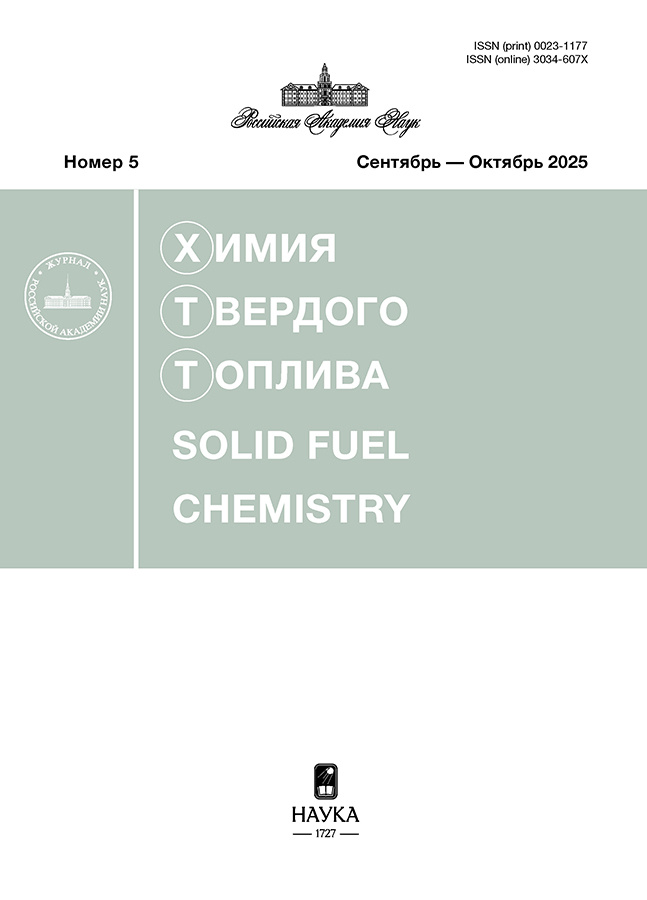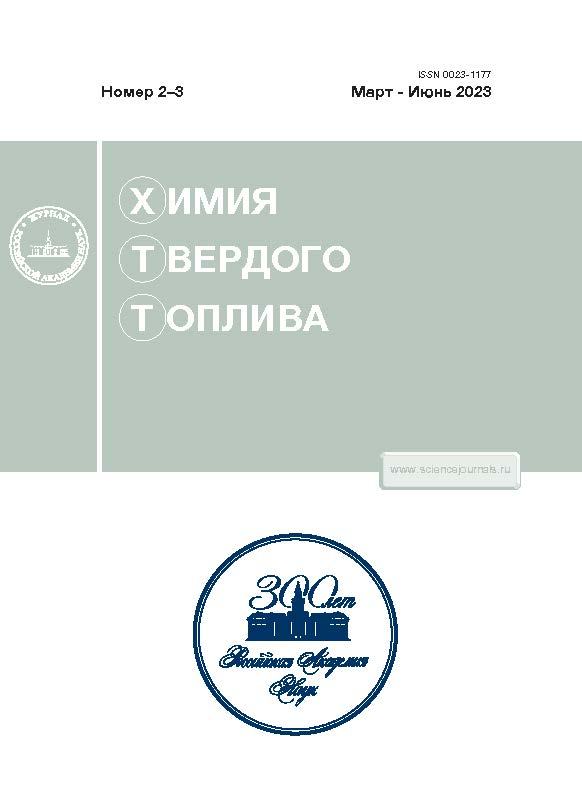ВЛИЯНИЕ ОБРАЗУЮЩИХСЯ IN-SITU НИКЕЛЬ- И КОБАЛЬТСОДЕРЖАЩИХ КАТАЛИЗАТОРОВ НА МЕХАНИЗМ ПРЕВРАЩЕНИЯ АСФАЛЬТЕНОВ ТЯЖЕЛОЙ НЕФТИ
- Авторы: Уразов Х.Х.1, Свириденко Н.Н.1
-
Учреждения:
- ФГБУН Институт химии нефти СО РАН (ИХН СО РАН)
- Выпуск: № 2-3 (2023)
- Страницы: 86-91
- Раздел: Статьи
- URL: https://rjmseer.com/0023-1177/article/view/661910
- DOI: https://doi.org/10.31857/S0023117723020159
- EDN: https://elibrary.ru/CBLDOK
- ID: 661910
Цитировать
Полный текст
Аннотация
Изучено влияние количества прекурсоров оксидов кобальта и никеля на состав и структуру продуктов каталитического крекинга тяжелой нефти Зюзеевского месторождения. Выявлено, что увеличение количества загружаемого прекурсора приводит к деструкции большего количества смолисто-асфальтеновых компонентов и выхода фракции НК-360°С. Установлено, что никельсодержащие катализаторы способствуют разрушению 66% высокомолекулярных компонентов, а кобальтсодержащие – низкому выходу побочных продуктов. Изучен структурно-групповой анализ асфальтенов исходной нефти и образованных после термического и каталитического крекингов. На основании полученных данных представлен возможный механизм протекающих реакций.
Ключевые слова
Об авторах
Х. Х. Уразов
ФГБУН Институт химии нефти СО РАН (ИХН СО РАН)
Email: urazovhh@gmail.com
Россия, 634055, Томск
Н. Н. Свириденко
ФГБУН Институт химии нефти СО РАН (ИХН СО РАН)
Автор, ответственный за переписку.
Email: nikita26sviridenko@gmail.com
Россия, 634055, Томск
Список литературы
- Guo K., Li H., Yu Z. // Fuel. 2016. V. 185. P. 886. https://doi.org/10.1016/j.fuel.2016.08.047
- Yakubov M.R., Abilova G.R., Yakubova S.G., Mironov N.A. // Pet. Chem. 2020. V. 60. P. 637. https://doi.org/10.1134/S0965544120060109
- Zhao F., Liu Y., Lu N., Xu T., Zhu G., Wang K. // Energy Report. 2021. V. 7. P. 4249. https://doi.org/10.1016/j.egyr.2021.06.094
- Kadkin O.N., Mikhailova A.N., Khafizov N.R., Yuan C., Varfolomeev M.A. // Fuel. 2022. V. 313. P. 123056. https://doi.org/10.1016/j.fuel.2021.123056
- Lakhova A., Petrov S., Ibragimova D., Kayukova G., Safiulina A., Shinkarev A. Okekwe R. // J. Pet. Sci. Eng. 2017. V. 153. P. 385. https://doi.org/10.1016/j.petrol.2017.02.015
- Yeletsky P.M., Zaikina O.O., Sosnin G.A., Kukushkin R.G., Yakovlev V.A. // Fuel Process. Technol. 2020. V. 199. P. 106239. https://doi.org/10.1016/j.fuproc.2019.106239
- Guo K., Hansen V.F., Li H., Yu Z. // Fuel. 2018. V. 211. P. 697. https://doi.org/10.1016/j.fuel.2017.09.097
- Уразов Х.Х., Свириденко Н.Н. // ХТТ. 2022. № 2. С. 46. [Urazov K.K., Sviridenko N.N. // Solid Fuel Chem. 2022. V. 56. P. 128. https://doi.org/10.3103/S0361521922020100]https://doi.org/10.31857/S0023117722020104
- Urazov K.K., Sviridenko N.N., Iovik Y.A., Kolobova E.N., Grabchenko M.V., Kurzina I.A., Mukhamatdinov I.I. // Catalysts. 2022. V. 12. P. 1154. https://doi.org/10.3390/catal12101154
- Nassar N.N., Hassan A., Pereira-Almao P. // Energy Fuels. 2011. V. 25. P. 1017. https://doi.org/10.1021/ef101230g














